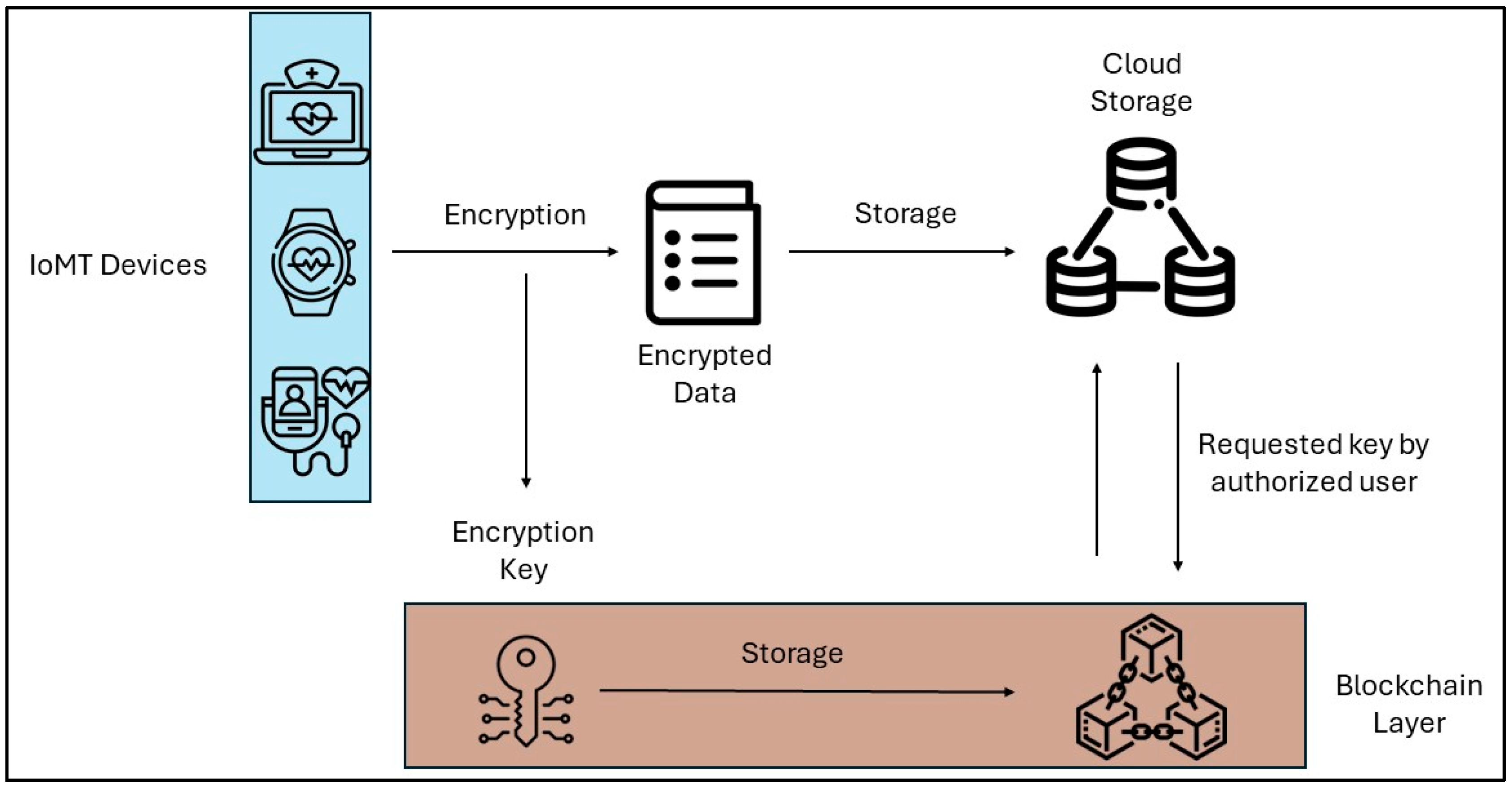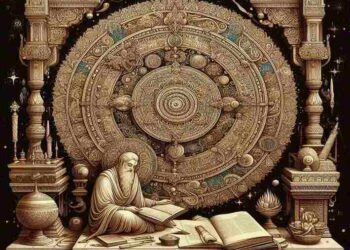Table of Contents
ToggleIntroduction
How Blockchain Is Helping Preserve Literature The preservation of literature lies at the nexus of innovation and tradition in a world where digital revolution is changing every part of our lives. Although manuscripts and printed books have long been valued as the cornerstone of human knowledge and culture, contemporary technology is now providing new ways to preserve literary works. In this sense, blockchain technology is among the most intriguing technological developments.
The decentralized ledger system known as blockchain, which powers cryptocurrencies like Bitcoin, has quickly progressed from a financial instrument to a multipurpose technology with a broad range of uses, including the preservation of literary works.
Blockchain’s intrinsic security, immutability, and transparency make it the perfect platform for safeguarding and conserving literary works for future generations. This essay will examine how blockchain is transforming our understanding of the preservation, sharing, and commercialization of literature.
What is Blockchain?
At its core, blockchain is a digital ledger system that allows for the secure recording of transactions across multiple computers. Each “block” in the chain contains a record of a transaction, and once a block is added to the chain, it is nearly impossible to alter or delete. This immutability feature makes blockchain a powerful tool for ensuring the authenticity and integrity of data.
Because blockchain is a decentralized network, no one organization controls the entire system. This is how blockchain differs from conventional centralized databases, in which data may be added, removed, or altered by a central authority. By providing a clear and unchangeable record of literary works, blockchain can be a creative answer for writers, publishers, and readers alike.
Read More
How Blockchain is Changing Literature Preservation
1. Digital Copyright and Ownership
One of the most pressing issues facing writers and creators today is ensuring the protection of their intellectual property. In the digital age, where piracy and unauthorized reproductions are rampant, maintaining control over one’s work has become a complex challenge. Blockchain technology addresses this issue by providing an immutable record of ownership and authorship.
By registering a literary work on the blockchain, authors can create an unalterable proof of ownership. This record includes metadata such as the date of creation, authorship details, and any licensing terms. Blockchain’s transparency ensures that the rightful author is recognized, and unauthorized copies or adaptations can be traced back to the original source.
For example, a writer could upload their manuscript onto a blockchain platform. This creates a digital “fingerprint” of the work, which cannot be tampered with. Each time the work is used, the blockchain records the transaction, ensuring that royalties or credit are properly allocated. This creates a secure and transparent environment where authors can retain control over their creations and benefit from their intellectual labor.
2. Digitization and Long-Term Preservation
Literature, especially in the form of rare manuscripts, books, and historical documents, is vulnerable to the ravages of time, natural disasters, and human error. Books can decay, and physical libraries can be lost or destroyed in fires, floods, and other catastrophic events. While digitization has helped mitigate some of these issues, the threat of data loss or corruption still looms over digital archives.
Blockchain technology offers an additional layer of protection for digital archives. Through blockchain, literary works can be stored across multiple decentralized nodes, ensuring that copies are available even if one server goes down. This decentralized nature of blockchain means that digital archives of books and manuscripts are far less likely to be compromised.
Moreover, the use of blockchain allows for the creation of smart contracts that automate the process of updating and verifying digital archives. For example, if an institution digitizes a rare manuscript, it can store the record on a blockchain. Any future updates or modifications to the manuscript can be tracked in real-time, and an immutable record will ensure that future generations can access the document in its most authentic form.
3. Enhancing Access and Distribution
Blockchain also plays a significant role in enhancing access to literature by making it more accessible and enabling a more decentralized distribution model. Traditional publishing models are often centralized, with a few powerful corporations controlling the distribution channels of books. Authors may find themselves limited in terms of access to the market, while readers often face barriers such as high prices or geographical restrictions.
By leveraging blockchain, authors and readers can interact directly, bypassing the traditional gatekeepers of the literary world. Through blockchain-based platforms, authors can publish their works directly, retain full control over their intellectual property, and distribute them at a lower cost. Blockchain’s secure payment systems allow for microtransactions, meaning readers can pay small amounts for individual chapters or sections of a book, making literature more accessible on a global scale.
In addition, blockchain allows for the creation of tokenized books—digital assets that represent ownership of a particular work. These tokens can be traded or sold, providing a new revenue model for authors. By utilizing blockchain’s transparency and security, authors can ensure that they receive fair compensation for each transaction, and readers can feel confident that their purchases are legitimate.
4. Preserving Literary Heritage through NFTs
One of the most innovative ways blockchain is being used in the preservation of literature is through Non-Fungible Tokens (NFTs). NFTs are unique digital assets stored on a blockchain that represent ownership of a particular item or piece of content. Unlike cryptocurrencies, which are interchangeable, NFTs are one-of-a-kind, making them ideal for representing rare or valuable items such as limited-edition books, manuscripts, or artwork.
NFTs have been adopted by authors, publishers, and literary organizations as a new way to preserve and distribute literature. An author might release a limited edition of their novel as an NFT, ensuring that each token is a unique, verifiable representation of their work. Collectors and readers who purchase these NFTs can then prove their ownership and, in some cases, sell or trade their tokens to others.
NFTs can also be used to preserve historical literary works. For example, rare manuscripts, letters, or first editions could be digitized and sold as NFTs, ensuring that these important pieces of literary history are preserved and shared for future generations. By leveraging the blockchain’s secure and transparent nature, NFT technology provides a new way to protect and pass down literary heritage.
The Benefits of Blockchain for Literature
1. Transparency and Trust
Blockchain’s transparent nature allows readers and authors to trust that the literary works they engage with are authentic and properly attributed. This transparency is particularly important in the context of ensuring that authors are compensated fairly and that piracy and plagiarism are minimized. Readers can easily verify the provenance of a book or manuscript, ensuring they are purchasing genuine content.
2. Decentralization and Accessibility
Blockchain decentralizes control over literary works, allowing authors to maintain more autonomy over their content and revenue. It also breaks down geographical and economic barriers, making literature more accessible to a global audience. By removing traditional intermediaries like publishers and distributors, authors can reach readers directly and retain more of the financial benefits of their work.
3. Long-Term Preservation
By storing literary works on the blockchain, we ensure their long-term preservation. The decentralized, immutable nature of the blockchain guarantees that works will remain intact for generations, even in the face of technological failures or natural disasters. This aspect of blockchain makes it an ideal solution for preserving cultural heritage, rare manuscripts, and historically significant works of literature.
4. New Revenue Streams for Authors
Blockchain opens up new opportunities for authors to monetize their works in ways that were not previously possible. With smart contracts, authors can receive automatic payments based on the use or distribution of their work, including royalties from digital sales, rentals, and even adaptations. By issuing NFTs, authors can sell limited-edition versions of their works, creating a new market for collectible literary assets.
Challenges and Limitations
While blockchain offers numerous benefits for the preservation of literature, there are some challenges and limitations to consider.
1. Adoption and Education
Blockchain is still a relatively new technology, and its adoption in the literary world is in its infancy. Many authors and publishers are not yet familiar with the potential of blockchain or may be hesitant to adopt new technologies. Educating creators and literary institutions about the benefits and possibilities of blockchain is a crucial step toward broader adoption.
2. Environmental Impact
The environmental impact of blockchain technology, especially energy consumption, is a significant concern. Traditional blockchain systems, such as Bitcoin, require large amounts of computational power, which contributes to high energy consumption and carbon emissions. However, newer blockchain platforms, such as Ethereum 2.0, are working toward more energy-efficient consensus mechanisms, such as Proof of Stake, to reduce their environmental footprint.
Read More
3. Legal and Copyright Issues
While blockchain can help secure intellectual property, the legal framework surrounding digital ownership and copyright is still evolving. Questions around copyright enforcement, intellectual property rights, and the international regulation of blockchain-based works need to be addressed. Additionally, as NFTs become more popular, the legal status of digital ownership may need to be clarified in various jurisdictions.

Conclusion
Blockchain technology is poised to redefine the way we preserve and interact with literature. By offering solutions to issues like copyright protection, digital preservation, decentralized distribution, and new monetization strategies, blockchain can help ensure that literary works—both new and old—are safeguarded for future generations.
As blockchain technology continues to evolve, it will likely play an even more significant role in the global literary ecosystem, offering new opportunities for authors, readers, and institutions to interact with and protect the literary heritage of humanity. While there are challenges to overcome, the promise of blockchain for literature preservation is undeniable, providing a digital solution to an age-old problem.
Read More
FAQ
1. What is blockchain, and how does it work in literature preservation?
Blockchain is a decentralized digital ledger system that records transactions in a transparent and immutable way. In literature, it is used to protect intellectual property, provide proof of ownership, ensure transparency in distribution, and preserve literary works through decentralized digital archives.
2. How does blockchain protect authors’ intellectual property?
Blockchain creates an unalterable record of authorship and ownership of a literary work. By registering a work on the blockchain, authors can prove that they are the rightful creators, and the blockchain tracks all transactions and licensing to ensure fair compensation.
3. What are NFTs, and how are they used in literature?
Non-Fungible Tokens (NFTs) are unique digital assets stored on a blockchain that represent ownership of a specific item or work. In literature, NFTs can be used to sell limited editions, rare manuscripts, or unique digital versions of books, ensuring that ownership is verifiable and secure.
4. What are the benefits of using blockchain for literature preservation?
The benefits include transparency, decentralized control, long-term preservation, and new revenue opportunities for authors. Blockchain ensures that literary works are securely stored, and authors are compensated fairly through transparent and automated transactions.
5. Are there any challenges to using blockchain in literature?
Some challenges include the environmental impact of blockchain technology, the need for education and adoption in the literary community, and the ongoing development of legal frameworks for digital ownership and copyright enforcement.
6. How does blockchain help in preserving rare manuscripts or historical texts?
By digitizing and storing rare manuscripts and historical texts on the blockchain, these works are secured across multiple decentralized nodes, ensuring they remain intact and accessible even if physical archives are lost or damaged.
7. Can blockchain help in making literature more accessible globally?
Yes, blockchain can provide a decentralized platform for authors to distribute their work directly to readers without the need for traditional publishers, thereby reducing costs and increasing accessibility, especially in regions with limited access to physical books or libraries.
















